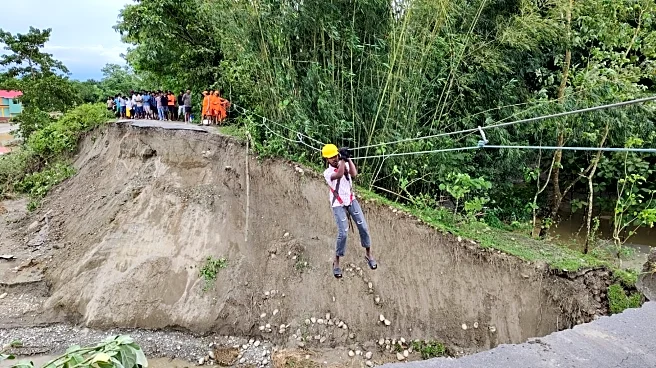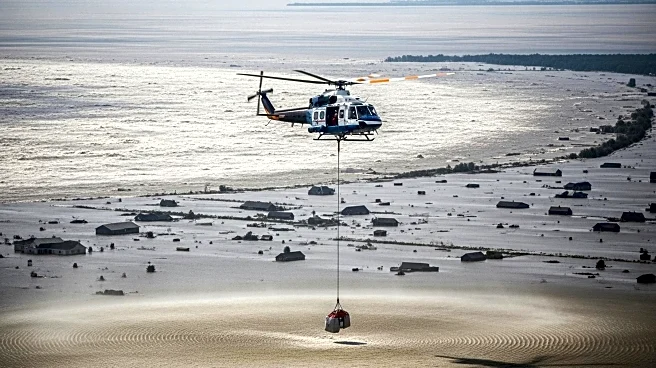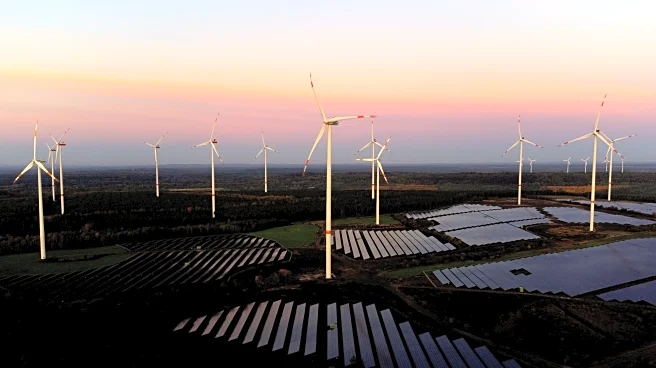What's Happening?
India is in early discussions with local insurers to develop a nationwide climate-linked insurance program. This initiative aims to streamline payouts following extreme weather events like heatwaves and floods. The proposed scheme would use a parametric insurance model, providing predetermined payouts when specific weather conditions are met. This approach could make India one of the first major economies to implement such a program, potentially reducing government disaster relief costs by transferring risk to insurers. The National Disaster Management Authority, finance ministry, and top insurers are exploring coverage options and funding mechanisms.
Why It's Important?
The introduction of a climate-linked insurance scheme in India could significantly impact the country's ability to manage financial risks associated with extreme weather events. With India ranking sixth globally in climate vulnerability, the scheme could provide a more efficient and rapid response to disasters, reducing economic losses and aiding recovery efforts. This model could serve as a blueprint for other nations facing similar climate challenges, promoting global interest in parametric insurance solutions. The initiative also highlights the growing importance of financial instruments in mitigating climate risks, aligning with global sustainability goals.
What's Next?
If the discussions progress, India may see the formal proposal of the insurance scheme, potentially leading to its implementation. The government is considering various financing options, including disaster relief funds and utility bill levies, to support the scheme. As interest in parametric insurance grows globally, India’s move could influence international policy discussions, particularly at upcoming climate summits. States within India are already piloting similar schemes, indicating a trend towards broader adoption of climate-linked insurance solutions.
Beyond the Headlines
The development of a nationwide climate-linked insurance scheme in India could have deeper implications for the insurance industry, potentially driving innovation in parametric models and expanding coverage in areas where traditional insurance is scarce. It may also prompt ethical discussions about the role of insurance in climate adaptation and the responsibilities of governments and insurers in protecting vulnerable populations.












